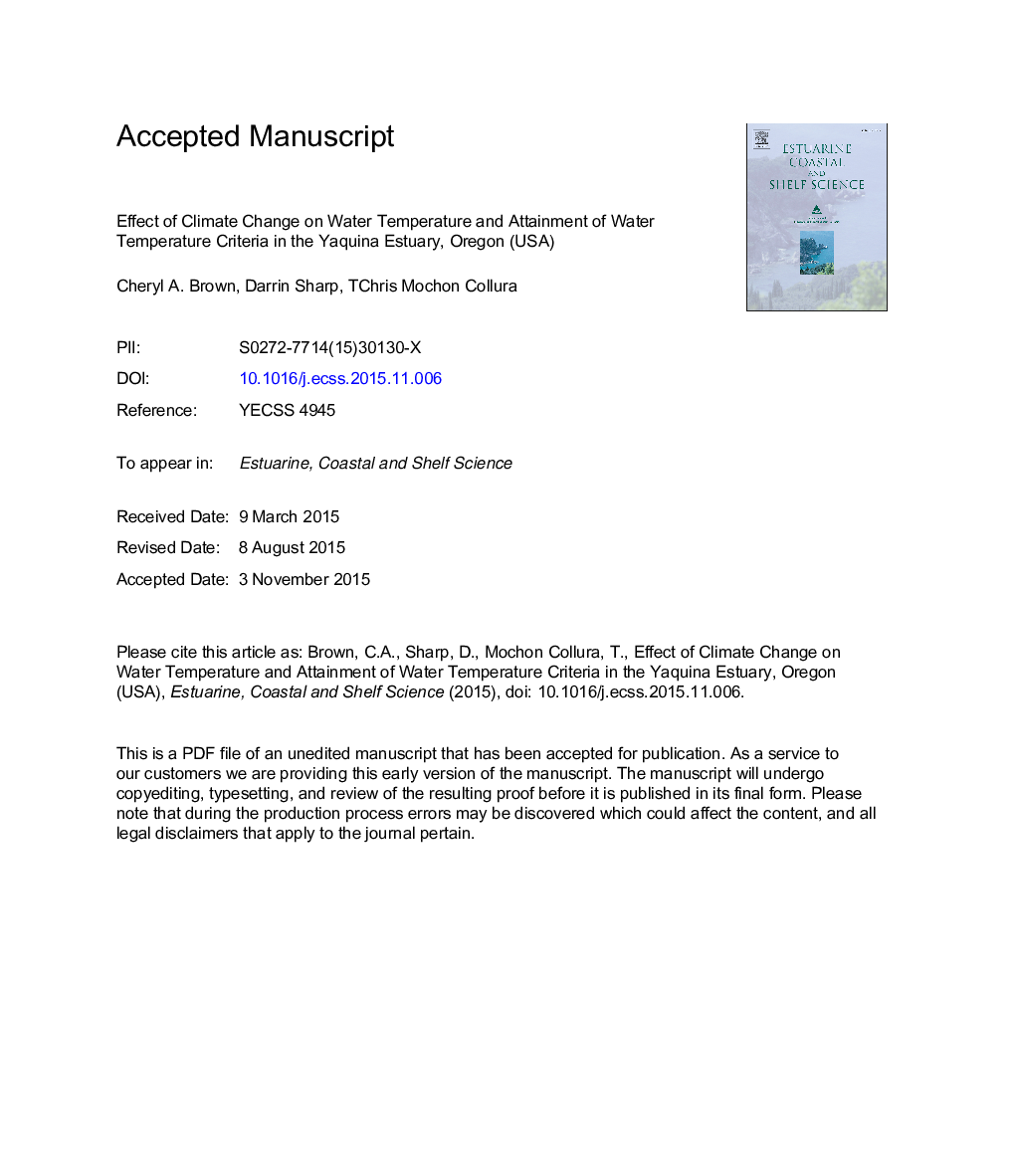| Article ID | Journal | Published Year | Pages | File Type |
|---|---|---|---|---|
| 6384520 | Estuarine, Coastal and Shelf Science | 2016 | 44 Pages |
Abstract
There is increasing evidence that our planet is warming and this warming is also resulting in rising sea levels. Estuaries which are located at the interface between land and ocean are impacted by these changes. We used CE-QUAL-W2 water quality model to predict changes in water temperature as a function of increasing air temperatures and rising sea level for the Yaquina Estuary, Oregon (USA). Annual average air temperature in the Yaquina watershed is expected to increase about 0.3 °C per decade by 2040-2069. An air temperature increase of 3 °C in the Yaquina watershed is likely to result in estuarine water temperature increasing by 0.7-1.6 °C. Largest water temperature increases are expected in the upper portion of the estuary, while sea level rise may mitigate some of the warming in the lower portion of the estuary. Smallest changes in water temperature are predicted to occur in the summer, and maximum changes during the winter and spring. Increases in air temperature may result in an increase in the number of days per year that the 7-day maximum average temperature exceeds 18 °C (criterion for protection of rearing and migration of salmonids and trout) as well as other water quality concerns. In the upstream portion of the estuary, a 4 °C increase in air temperature is predicted to cause an increase of 40 days not meeting the temperature criterion, while in the lower estuary the increase will depend upon rate of sea level rise (ranging from 31 to 19 days).
Related Topics
Physical Sciences and Engineering
Earth and Planetary Sciences
Geology
Authors
Cheryl A. Brown, Darrin Sharp, T. Chris Mochon Collura,
